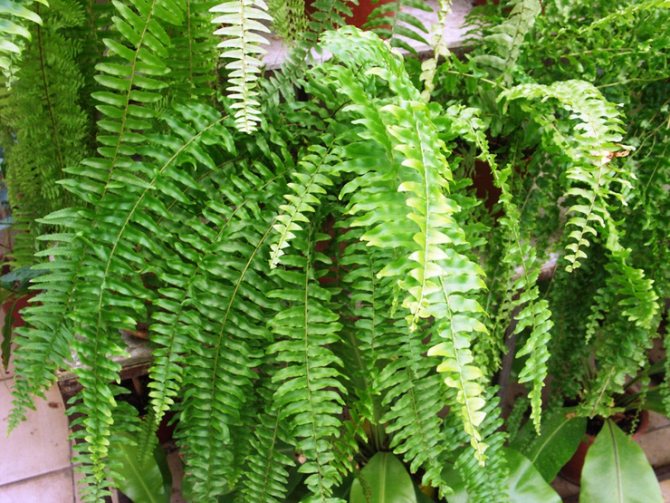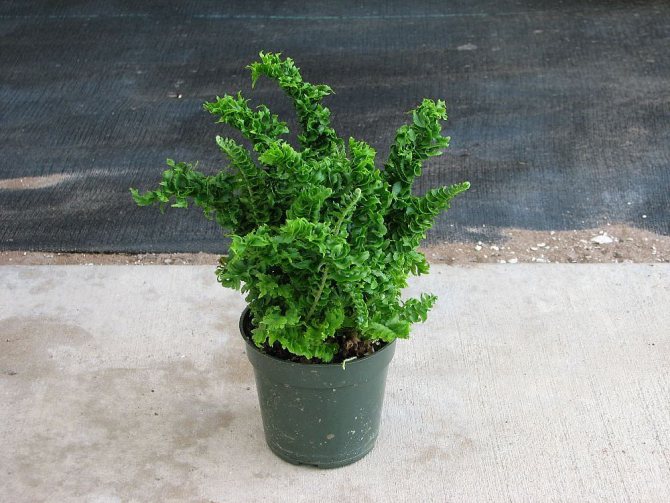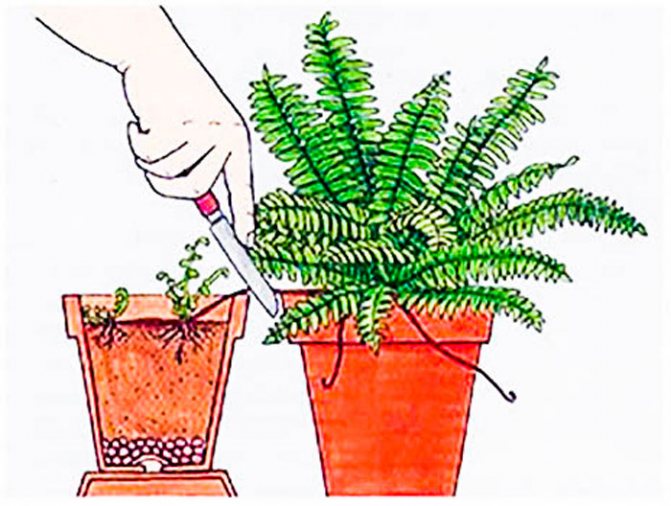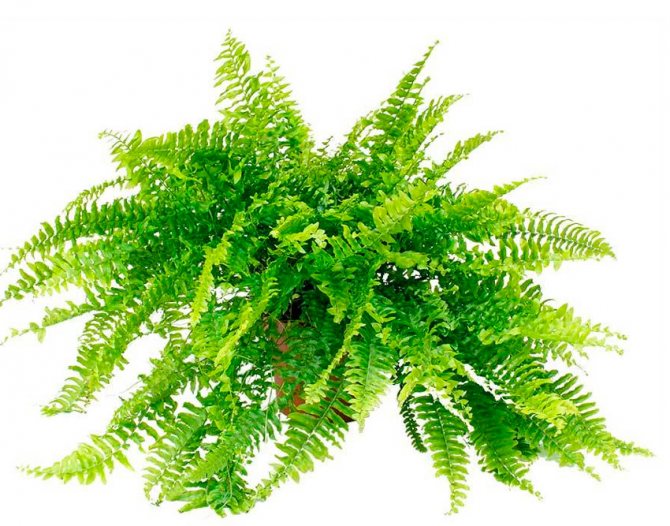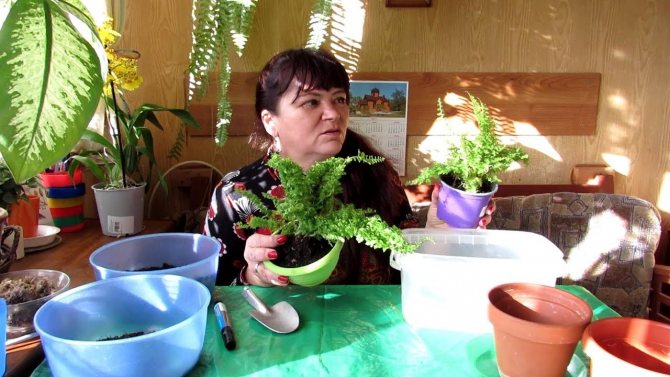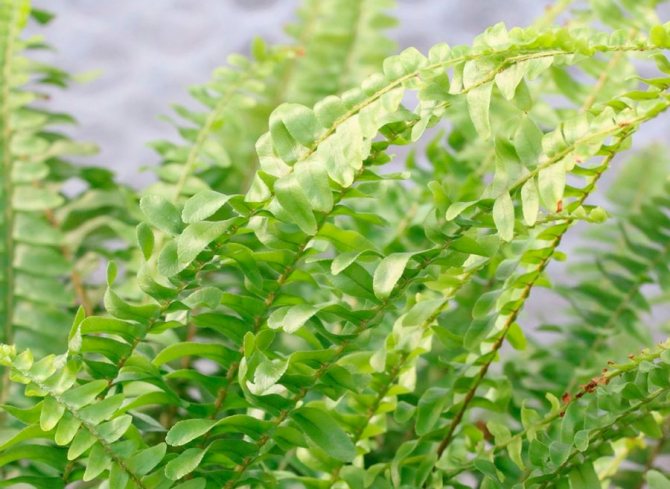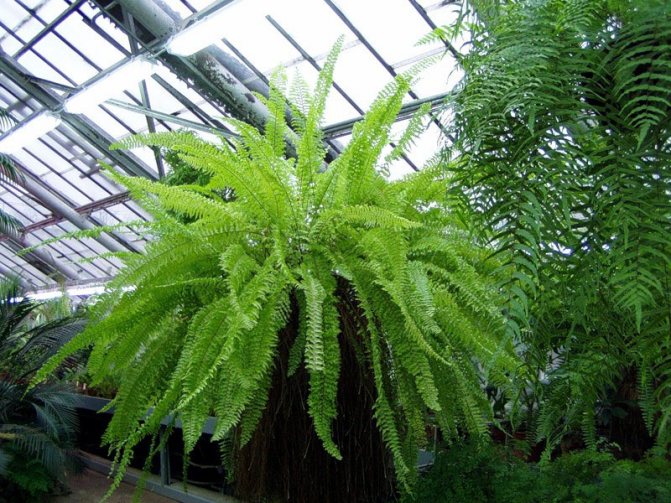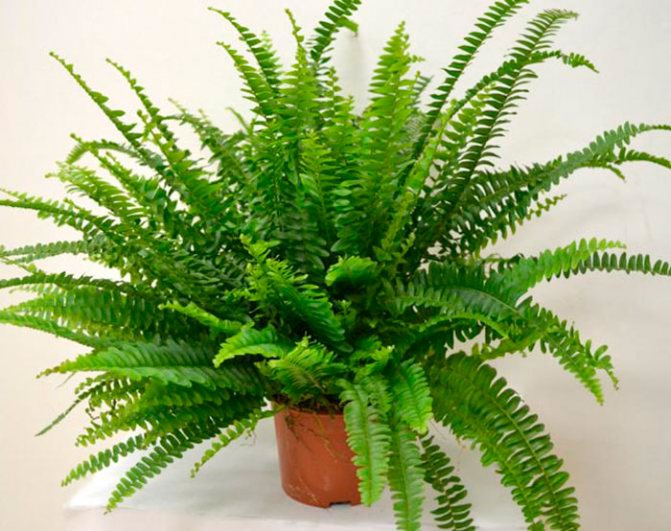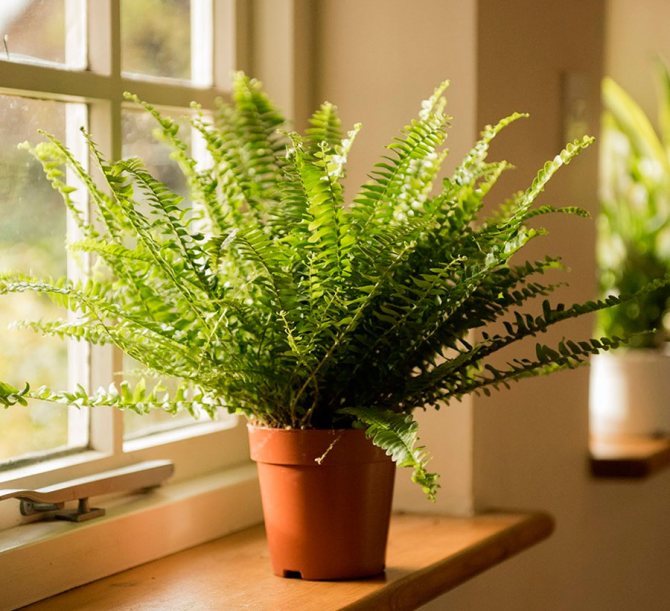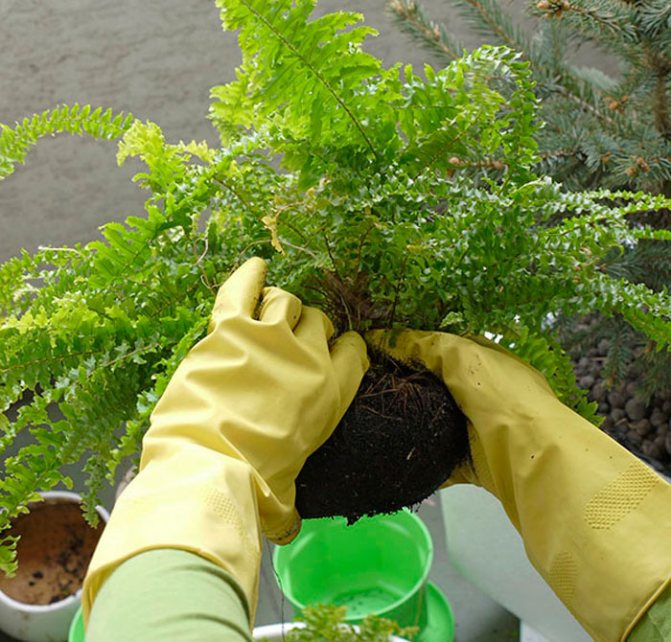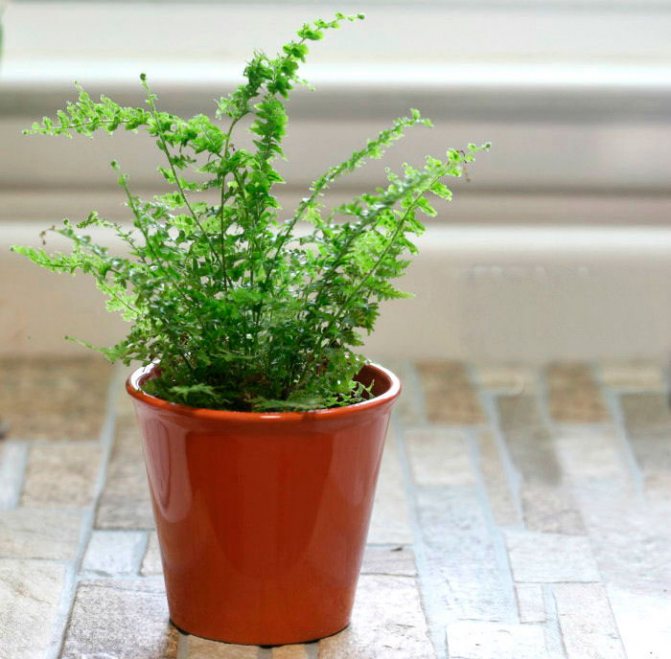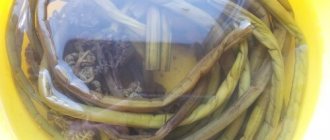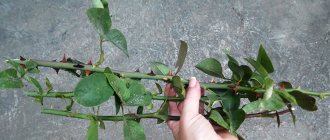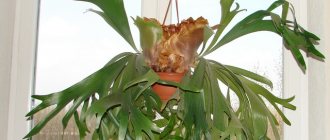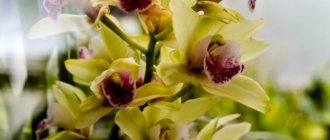Category: Houseplants
Plant nephrolepis (Latin Nephrolepis) belongs to the genus of ferns of the Lomariopsis family, in some classifications it belongs to the Davalliev family. The Latin name is derived from the Greek words "nephros" and "lepis", which mean "kidney" and "scales" in translation and contain a hint of the shape of the veil. In nature, there are about 30 species of nephrolepis, which are widespread throughout the world, but the nephrolepis plant is native to the shady forests of the tropics of Africa, America, Australia and Southeast Asia. In culture, nephrolepis fern is used as a pot or ampelous culture to decorate interiors - in addition to being very beautiful, nephrolepis perfectly purifies the air.
Meet Nephrolepis
Nephrolepis is a herbaceous plant that is an epiphyte or grows on the ground. It has an underdeveloped stem that gives short shoots.

Lush green fern will brighten up any interior
This lush splendor is home to tropical climates. In the wild, it can be found in Africa, Asia, America, Australia, even in Japan and New Zealand. Under natural conditions, the fern grows very quickly.
Its long, feathery leaves, called vayami, are collected in a rosette. Vayi can reach 70–80 cm in length.
Contrary to the legends about fern flowers, the plant is non-flowering, propagates by spores, dividing the bush or layering. Spores are collected in groups, forming the so-called sporangia. They look like miniature, at first green convex dots, as they mature - brownish fluffy lumps. Located on the underside of the leaves.


Many spores mature in the sporangia of the fern. which will subsequently give rise to new plant colonies
At home, several types of nephrolepis are bred. Among them there are unpretentious ones that do not cause much trouble, there are also capricious fussy choices with which you have to tinker. Which option is preferable - each owner chooses for himself, but in any case, the efforts will be rewarded. A healthy plant extraordinarily enlivens the interior with a cap of lush leaves.
The green mass of the fern not only produces oxygen, but also has antimicrobial activity. Nephrolepis absorbs formaldehydes, xylene, toluene generously emitted by household items from the air.
Indoor types of nephrolepis
There are several varieties of nephrolepis that growers grow as indoor plants:
- sublime nephrolepis;
- nephrolepis Boston;
- nephrolepis cordifolia;
- xiphoid nephrolepis;
- nephrolepis Green Lady;
- Emin's nephrolepis;
- blehnum, which belongs to the Derbyankov family.
Nephrolepis exaltata (Nephrolepis exaltata)
One of the most common ferns in home breeding. The plant is unpretentious, caring for it will not be difficult. Its long (up to 50–70 cm) green fronds are collected in a lush rosette. Aged leaves turn yellow, dry out before falling off.


Nephrolepis sublime is one of the most common fern varieties
This variety can reproduce both by dividing the bush and by spores. Sublime nephrolepis gave rise to the breeding of a mass of hybrids.
Nephrolepis Boston (Nefrolepis exaltata var Bostoniensis)
A variety bred, as the name suggests, in Boston from sublime nephrolepis. It is distinguished from its progenitor by wavy, twisted leaves. Vayi of this species can reach 1.2 m in length. He gave rise to the development of varieties with complex leaves, consisting of two, three and four leaves grown together. This variety is the most resistant to dry air.


Boston Nephrolepis is distinguished by its original wavy leaves
Nephrolepis cordifolia
This member of the family owes its name to the original form of leaves on long, growing almost vertically, fronds.
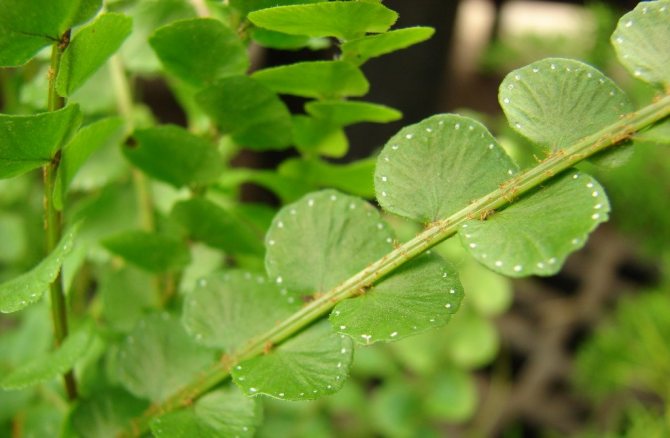

At the sight of the leaves of this variety, the origin of its name becomes clear.
Tuberous formations can be seen on the root system of this species. Sori are attached along the seamy edge of the heart-shaped leaves. This species, like the previous one, reproduces by spores, dividing the bush.
Nephrolepis xiphoid (Nefrolepis bisserata)
The leaves on the fronds of this species are shaped like sharpened swords. Spores are attached to the green leaves on the underside. This plant does not form tubers. A distinctive feature of xiphoid nephrolepis is a lush, reaching 1.5-2 m, crown. Fries of this size make this variety inconvenient for breeding at home in an ordinary apartment. You can meet this giant in greenhouses, winter gardens.


The pointed xiphoid shape of the leaves clearly distinguishes this variety from other ferns.
Nefrolepis Green Lady
A fern variety characterized by a spherical "fountain" of green pointed leaves. The fronds are densely covered with openwork lobes growing close to each other. The plant is demanding on air humidity.
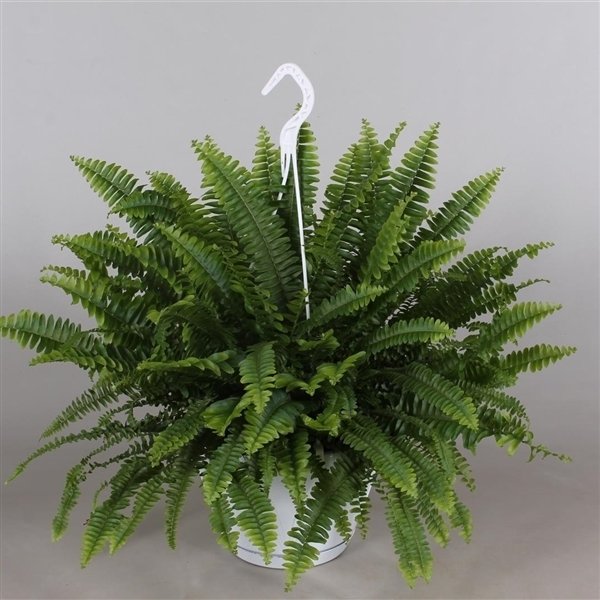

Strong, lush fronds Green Lady are big lovers of humidified air
Nefrolepis Emina
A low-growing compact plant, the fronds of which are elastic, almost erect. Its second name is Dragon Tail (dragon's tail) or Green Dragon (green dragon). The unusual "curly" leaves give it a special appeal. This species grows up to 50 cm
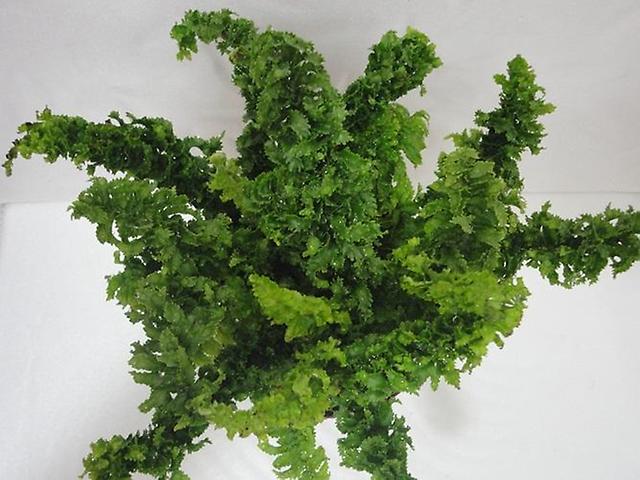

Emin's nephrolepis strikes with elastic fronds covered with curly leaves
Blechnum (Blechnum) is another representative of ferns popular with flower growers, however, of another family - Derbyankovs. In natural conditions, its frond reaches a length of up to 1.5 m. It has earned recognition among lovers of indoor flowers due to its frond covered with green palm-like leaves. With age, the rhizome grows above the ground and changes, becoming similar to the trunk. The plant as a whole resembles a palm tree. This type of fern is capricious and picky about growing conditions and care, but for the sake of such beauty it is worth trying. At home, with proper care, fronds can reach lengths of up to 1 m.


Lignified modified rhizome and frond with long leaves give Blehnum a similarity to a palm tree
Main types
In indoor floriculture, no more than half of all varieties are common.
Consider the main types of nephrolepis:
- Nephrolepis cordifolia - a native of Asia and northern Australia. Possesses erect leaves of a dark green color. The shape of the leaf segments is round, reminiscent of small coins. The tubers are covered with silvery scales. It grows well in the room and is considered one of the most decorative species. It is also used in the design of bouquets. The plant is a noxious weed in New Zealand and the United States.
- Nephrolepis sublime - comes from the tropical regions of America, mainly Central and South. Boston fern is the synonymous name for this species. Grows in tropical forests and swamps. It has several subspecies, among which there are both small and large specimens.It is the ancestor of many other types of nephrolepis. The leaf rosette consists of a large number of light green leaves, which reach a length of 120 cm. At first, the stems grow vertically, and then bend downward. This is the easiest fern to care for. It is convenient for decorating large spaces. Needs free space around the pot for good leaf cap development. In indoor floriculture, it is also grown in hanging baskets. It is possible to grow in the garden, in the open ground.
- Nephrolepis bisserata - grows in open ground, rarely found in indoor floriculture. The length of the xiphoid leaves can reach 2 m. Distributed almost everywhere: in Southeast Asia, Central and South America, Africa, the West Indies. In Indonesia, the rhizomes of nephrolepis bisserata are dried, crushed and eaten. On the island of Java, this fern is used in folk medicine as a cough suppressant.
- Nephrolepis Oblierate, or Queen Kimberly - Australian fern grown all over the world is perfect for indoor cultivation. Actively cleans the air from impurities harmful to health. In nature, it grows in tropical forests, in the ground near lakes and even on rocks. Comes from Australia and New Guinea. This is one of the most attractive ferns. It has beautiful, upright, dense leaves with sparse reddish-brown hairy scales.
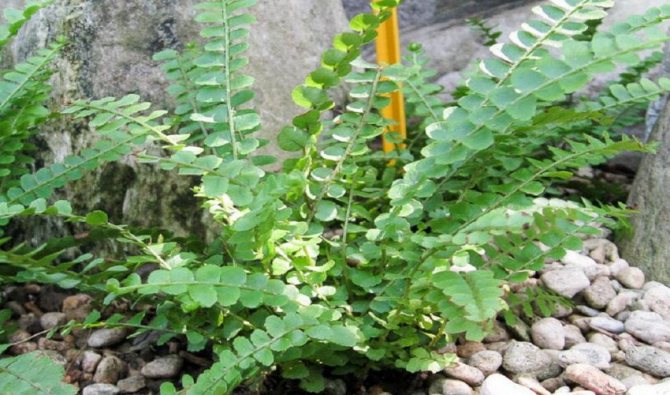

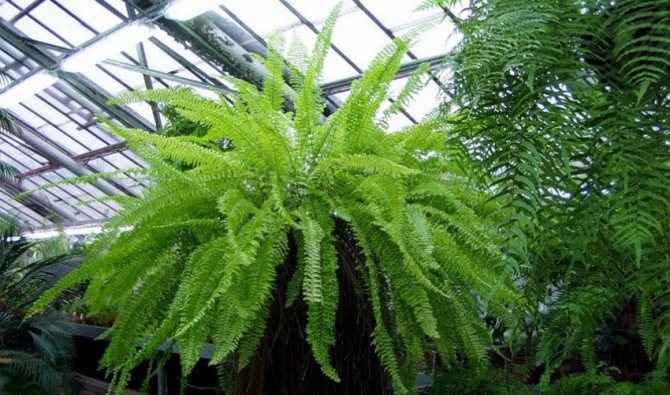



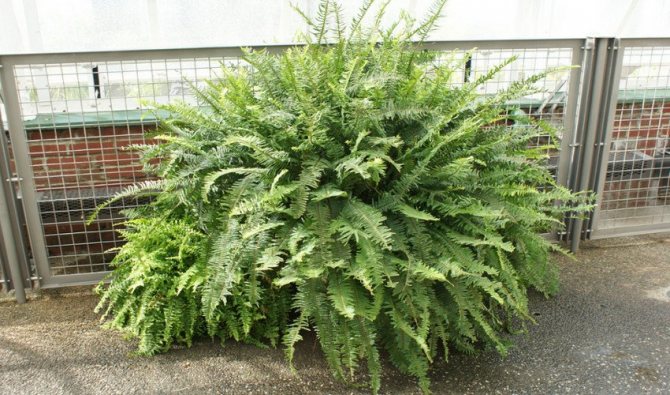

Conditions for keeping nephrolepis at home
Keeping nephrolepis at home assumes compliance with certain parameters, as well as care rules depending on the season.
Table: requirements for the content of nephrolepis at home
| Season | Lighting | Humidity | Watering | Temperature | Top dressing |
| Summer | Diffused, bright light, preferably located on windows facing west or east. Direct sunlight is contraindicated. Possible placement on a balcony, loggia, terrace in partial shade | Humidity - not less than 60%. Daily spraying with warm soft water is required. Placement of a flower pot on a pallet filled with moss and expanded clay soaked in water will help. The container with a flower should not be immersed in water | Watering is sufficient, you need to focus on the drying of the upper layer of the substrate | + 20о ... + 24оС | Fertilizers produced for ornamental plants are used weekly in diluted form (1/4 or 1/2 of the recommended rate) |
| Winter | In winter, additional artificial lighting may be required for at least 6-7 hours | Humidity - not less than 60%. Daily spraying with warm soft water is required. Placement of a flower pot on a pallet filled with moss and expanded clay soaked in water will help. The container with a flower should not be immersed in water | Watering carefully, 2-3 days after the top layer dries up. | + 16о ... + 18оС | It is extremely rare, it is better to completely cancel feeding - excessive efforts at this time are fraught with disastrous consequences for the plant |
Fern Nephrolepis in the florarium expositions
Florarium is an original composition of flowers with the addition of various decorative elements, placed in a transparent container made of glass or plastic.
A number of varieties of nephrolepis, due to their compact size, are used in the preparation of compositions for florariums. Bred from Boston nephrolepis, Bostoniensis Compacta is very small in size (up to 40 cm). This feature allows it to be used for growing in florariums. This species is quite unpretentious, in the conditions of a florarium, subject to a high level of humidity and temperature conditions, it will delight the owner with juicy greens. To compose compositions of florariums, you can pay attention to such varieties as Dallas Jevel, Teddy Junior. They are small in size, organically fit into florarium ensembles.
Croton is also perfect for the florarium, read about it:
Photo gallery: florariums using fern


Small size allows the plant to be used in florariums
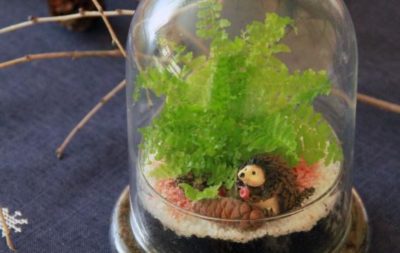

Florarium is a composition of flowers and various decorative elements
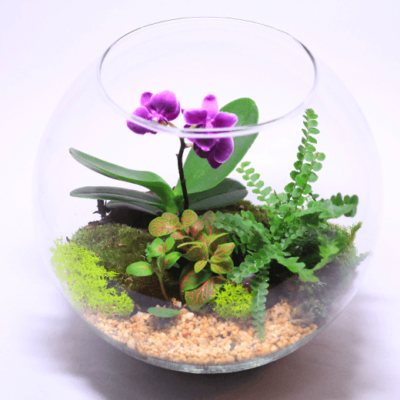

Small ferns fit in original frolarium ensembles
Signs and superstitions
The fern is mentioned in the legends of many peoples. The most popular legend of Slavic mythology says that a fern flower blooms in the place where the treasure is hidden. This happens only once a year - on the night of Ivan Kupala.
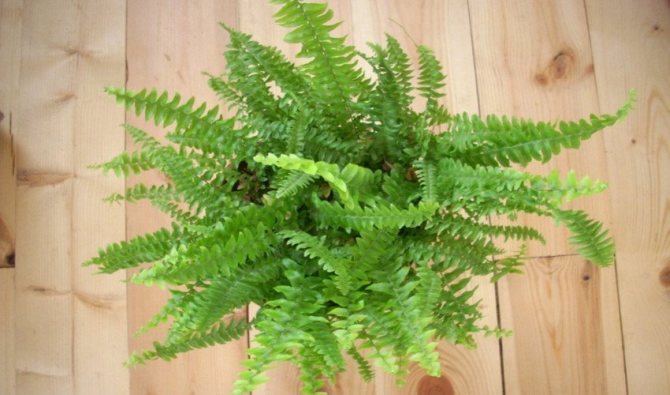

In England, the fern is a plant closely related to fairies. It was believed that his spores helped the fairies to become invisible. The British believed that the fern growing around the house protected it from witchcraft and spells.
The previous century and the use of plants for landscaping establishments gave rise to new omens and superstitions. So, it is believed that nephrolepis can grow well in an enterprise, but in the house it will bring misfortune and illness. It is impossible to scientifically confirm such a point of view, as well as trace its origins.
If you are not superstitious, you can choose nephrolepis as a home plant. It is unpretentious in maintenance, does an excellent job with greening the room and cleans the air from substances harmful to health. With proper care, the plant will invariably delight you with its excellent appearance.
Nuances of care
It is not difficult to care for this green miracle. It must be remembered that the plant is native to the tropics. Hence the increased sensitivity to dry air and watering.
Lighting
Nephrolepis is a lover of light, it should be placed in places with sufficient illumination, trying to avoid the sun's rays directly on the plant. Windows facing east or west will do. Nephrolepis feels good under artificial lighting: it can often be found in various offices and institutions where the fern has enough light from lamps that have been working for a long time.
In summer, the green pet can be taken out into the open air, not forgetting to shade from the sun to avoid burns.
In winter, there is little light in the premises, so additional lighting will be useful.
Humidity
Native to the humid tropics, nephrolepis requires humid air. Daily spraying with soft (necessarily warm) water will help, and in the summer it must be done in a double volume.
You can put the plant on a moistened pallet filled to the top with some kind of filler (expanded clay, moss). It is only important not to "sink" the bottom of the pot: it should stand as if it were on a stand. These requirements must be met regardless of the season.
Nephrolepis will gratefully respond to shower procedures. Warm water will not only keep the leaves moist, but also wash away the accumulated dust.
The humidified air is suitable for growing bashful mimosa. Read more about this exotic plant:
Top dressing
Nephrolepis needs to be fed depending on the season. In summer - once every 7 days. For feeding, you can take fertilizers recommended for ornamental plants, diluting by half or 3/4 with water.
In winter, fertilizers are used to a minimum, and it is better not to feed at all, since the introduction of an excessive amount of fertilizing during this period can lead to plant disease.
Some mistakes in plant care can have an adverse effect on the health of the plant.
Table: errors in the organization of nephrolepis care
| Symptoms | Possible errors | |||
| Watering | Temperature | Humidity | Top dressing | |
| Leaves turn yellow and dry | Excess water - the lower leaves turn yellow, their tips turn brown, dry out. Lack of water - the growth of leaves stops, their lethargy and yellowing are observed. Cold water. Hard water | Leaves turn yellow from the base - unfavorable temperature, should be rearranged to a cool place. When the temperature rises (> 25 ° C) - increase the spraying frequency. When the temperature drops (<12оС) - reduce the volume and number of irrigations | Spraying in direct sunlight | — |
| Young fronds wither and die | Use for cold water irrigation | Reduced temperature | Decreased humidity, increase the number of sprays | — |
| The plant fades, stops growing | — | — | — | Lack of nutrients, fertilize |
| Leaves turn yellow over time | Natural process, dried fronds should be removed | |||
Possible problems
Most often, you can encounter such problems as changing the color of the leaves to yellow and completely drying out the wai.
In the event that something like this happened with an old leaf plate, you should not worry - you have a natural process of withering away. However, if young, just appeared leaves turn yellow, you should pay attention to the conditions in which the culture is kept. So, the cause of this problem may be the content of the plant in too dry air.
There are situations when brown spots form on the surface of the leaf plates. This is a sign that the plant is suffering from exposure to too bright sunlight.
On the contrary, a too pale color of the leaves may indicate a lack of lighting.
Nephrolepis will grow poorly if space is limited. In this case, it is necessary to transplant the plant into a wider pot.
If the plant has stopped giving new shoots, and the color of the existing ones has become too pale, then this is a signal that the fern lacks nutrients. In this case, it is necessary to feed the plant.
Table: diseases and pests of nephrolepis
| Diseases and pests | Symptoms | Ways to fight | Prevention measures |
| Gray rot | Gray fluffy bloom on leaves, cuttings | Treat with fungicide (Trichophyte, Alirin-B) | Avoid stagnant water, water with cold water at low temperatures |
| Spider mite | White dots appear on the leaves, the leaves gradually dry out, with a strong lesion, a thin web is visible | Wash with warm water and laundry soap, in case of severe damage, treat with special means (Aktellik, Aktara, Conifor) | Ventilate the room regularly, spray the plant, periodically wash it under the shower |
| Whitefly | Yellowish spots appear on damaged leaves. leaves dry up | Wipe the leaves with a water-alcohol solution (1: 1). Treat with insecticides (Fitoverm, Aktellik, Aktara, Conifor) | Observe the temperature and water regime, avoid high temperatures with high humidity - ventilate the room more often, regularly wash the flower under the shower |
| Mealybug | A white bloom appears on the leaves, they have a damaged appearance, turn yellow. Pests are visually visible | Wash the fern with soapy water, after drying, treat with insecticides (Fitoverm, Aktellik, Aktara, Inta-Vir) | Regularly inspect the plant, ventilate the room, spray, wash |
Reproduction of nephrolepis
Nephrolepis can be propagated in several ways:
- disputes;
- dividing the bush;
- shoots;
- tubers.
Reproduction by spores
This method is difficult due to the probable infertility of spores of domestic cultures or the presence in them of inadequate hereditary information about the parent. If there is a persistent desire, you need to do the following:
- Carefully separate the ripe kernels with a knife, folding on paper.
- Place the spores on the prepared soil. Drainage is required. For the greenhouse, you need to use a plastic container with a lid.
- Put the seeds on a moistened substrate and, with a lid, leave in a warm, shaded place.
- Ventilate the incubator periodically and moisten the soil.With a successful combination of circumstances, it will take about three months for seeds to germinate. When the sprouts grow up and get stronger, they do not need to be covered.
- The shoots that have formed the rosette can be planted.
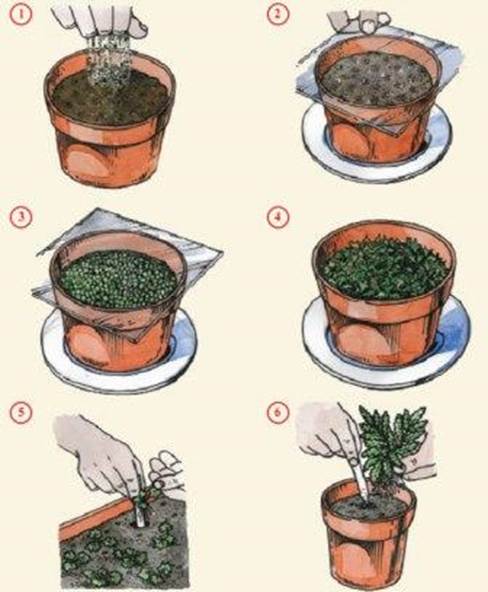

Disputes of domestic cultures of nephrolepis can be sterile, so this method of reproduction is difficult and rarely used.
Reproduction by dividing the bush
This is the simplest and most common option:
- With a spring transplant, the rhizome is divided into several parts. It is necessary that each new bush has a growth point.
- Small bushes are planted separately.
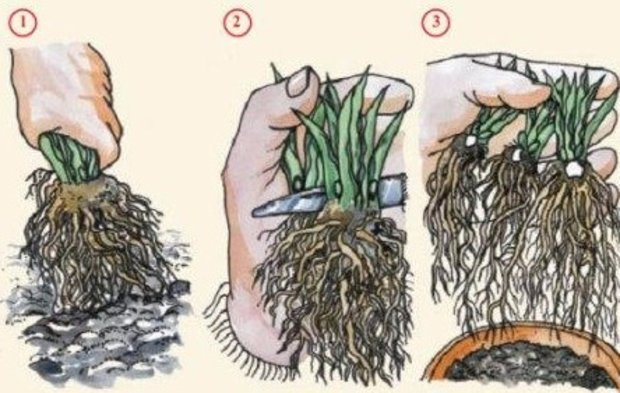

Reproduction of nephrolepis by dividing the bush during transplantation is the simplest and most common option
Reproduction by shoots
The "mustache" that seems to be hanging down will help to get a new fern:
- Leafless shoots must be taken to the side, pressed against the substrate and placed in a separate bowl.
- They need to be dug so that the middle is covered with soil by about 1 cm.
- We must not forget about constant hydration.
- After two weeks, roots will appear, and then small shoots. When young shoots get stronger, they can be separated from the mother plant and planted separately.


For this method of reproduction, leafless shoots of nephrolepis are taken to the side and in a separate bowl pressed to the ground until rooting
Tuber propagation
Some species form moisture-saving tubers on the roots. They can be clearly seen when handling the plant. This breeding method is incredibly simple:
- The tuber is separated from the roots.
- Then it must be placed in the finished substrate.
- The soil is moistened as usual.


On the roots of many types of nephrolepis tubers are formed, which are excellent for plant propagation.
Growing
This fast-growing perennial fern has survived from the era of the dinosaurs. His homeland is the tropical zones of Australia, America, Southeast Asia and Africa. It is a real natural filter: nephrolepis absorbs and neutralizes vapors of toluene, xylene and formaldehyde, kills pathogenic bacteria... Taking care of a plant is not difficult.
Soil and fertilizers
Choose a porous and lightweight soil. A universal substrate from the store is perfect, with perlite (1/4 volume) and high peat. Or you can make the mixture yourself by mixing 2 parts of universal soil, 5 tablespoons of charcoal and 3-4 handfuls of coco soil (based on coconut fibers).
After buying nephrolepis, it is better not to leave it in the old store substrate. Give it a month to adapt to the new microclimate, and then transplant it into new soil and a larger pot. Be sure to inspect the roots, remove rotten and damaged processes. It is not necessary to deepen the plant, leave the vertical rhizome above the soil level.


You can feed the plant from spring to late autumn - during these months, nephrolepis is actively developing. Fertilizer - mineral or organic - applied every week.
In winter, it is enough to pamper the plant once a month, using organic and mineral compounds in turn.
But this concerns a plant that hibernates in warmth. If during the cold weather the indoor fern will be exposed in a cool place, feeding and care is not required for it.
They are fed to adults, fully formed crops that have developed a root system. The fern does not like large doses, therefore, be sure to reduce the rate prescribed in the instructions by 4-5 times, and divide the monthly dose by the number of waterings.
Pot
A shallow pot is suitable for a young plant. Bulky containers will provoke rotting of the root system. For a mature plant, take a larger container, but shallow - it will be more comfortable for its roots. The container should be stable and heavy, made of clay or porcelain. Be sure to disinfect it with a solution of potassium permanganate, vinegar essence or soda-salt solution.Chlorhexidine can also be used, but this remedy is quite powerful and is more suitable for containers in which a plant affected by disease or pests has ever grown.
Do not forget to put a 3-5 cm drainage layer on the bottom: river pebbles or small expanded clay.
Transfer
A healthy young (up to 3 years old) plant needs to be replanted every year, in the spring. Culture older than 3 years - every three years. Of course, if the plant gets sick or its roots become cramped - as needed. Transplant carefully, trying not to disturb the earthy clod on the roots.... Large specimens can be divided into two and planted in separate containers.
Plant reviews
This is one of the most unpretentious ferns, a very effective plant. I love this unpretentious indoor fern dearly. In September, she planted a huge basin-like pot, and everyone was gifted with a fern. But it took me a long time to grow well. At first I managed to get a plant of three half-leaves, around which I didn’t dance with a tambourine, I really wanted a big beautiful fern. But my dancing did not touch him in the least, and he stood at the same time, apparently wondering whether it was worth living. And so, digging up the Internet in search of an answer to what he needs, I came across a recipe that I want to share. For transplanting, the land must be very generously diluted with pine bark. We also add pieces of coal, coniferous litter, you can add sphagnum. It will not hurt to mix in sand if the land is purchased, otherwise there is, as a rule, only peat. And it is better to take a pot flat, and not high. Transplanted in this way, my worm somehow recovered very quickly and started growing, and now there are no problems with him. But he does not like drying out, and it is better to monitor the moisture of the earth. After all, it stands high, and the fact that it is dry is not immediately noticeable. The fronds do not fade, but simply turn pale somehow and begin to dry at the tips of the leaves. But the saddest thing is that the "snails" dry up before they could turn around. A beautiful home plant, unpretentious and grateful for its care, I recommend it!
irkin44
I have the same. It is necessary to rearrange the window, otherwise the leaves are long and sparse. But when he fluffs up - oh and handsome! All guests drop in.
Elf
I have had ferns for a long time, 15 years for sure. I am always surprised when you complain about the lack of light for them. In my experience, they are beautiful and green only in winter. As the spring comes - the sun, they begin to fade. If I take them out into the yard and on the completely shady side, where the sun never hits them, it’s the same. Become pale. Here are mine on the veranda in winter, I have already taken them off and hid them in the northern rooms.
jiquet
I adore this plant for its luxurious dense greenery, for an interesting observation of how a beautiful carved frond appears from "snails", and so on ad infinitum! Every now and then my little children came up, waited for green, furry balls to appear on the surface of the earth, which change in size every day. The plant survives well enough. But if you want it to be a juicy green, you need to create favorable conditions for it. The main thing is not to pour, often spray with settled water, not to feed with fertilizers, it is enough to fertilize twice with liquid fertilizer for decorative flowering plants. In very bright light, nephrolepis fronds turn pale, so you do not need to put it on the southern window. But in the shade it also fades. The most successful window will be the east one. In the New Year we decorate it with rain, it looks very original. A very nice lush fern.
Clarice
I love ferns, at my summer cottage I have several of them. Maybe that's why I also like nephrolepis, because he is also a representative of ferns. Awesomely beautiful at home. It is not difficult to grow it, it grows very quickly and is unpretentious.Prefers moist soil, loves spraying, grows well in partial shade, fertilizing is needed from time to time.
Anna Zakharchuk
Temperature and humidity
Comfortable temperature for good growth and development of nephrolepis + 17 ... + 25оС. This plant will withstand short-term drops and increases in temperature by several degrees, but with adjustments to watering and humidity. The cooler it is in the room, the more careful watering should be, the hotter, the higher the humidity.
Nephrolepis does not have a pronounced rest period, but for the winter it is advisable to remove the plant away from heating appliances, and if the flower hibernates on the window, insulate the windowsill and make sure that the temperature near the pot does not drop below + 12 ° C.
Most types of nephrolepis prefer high air humidity. They respond well to spraying, and in hot weather they especially need it. If the air in the room is very dry, the ferns are placed in a tray with pebbles, where water is poured. The bottom of the pot should not touch the water - this will help avoid waterlogging of the soil: evaporating, the water will increase the humidity around the plant. Various humidifiers can be used to increase humidity.
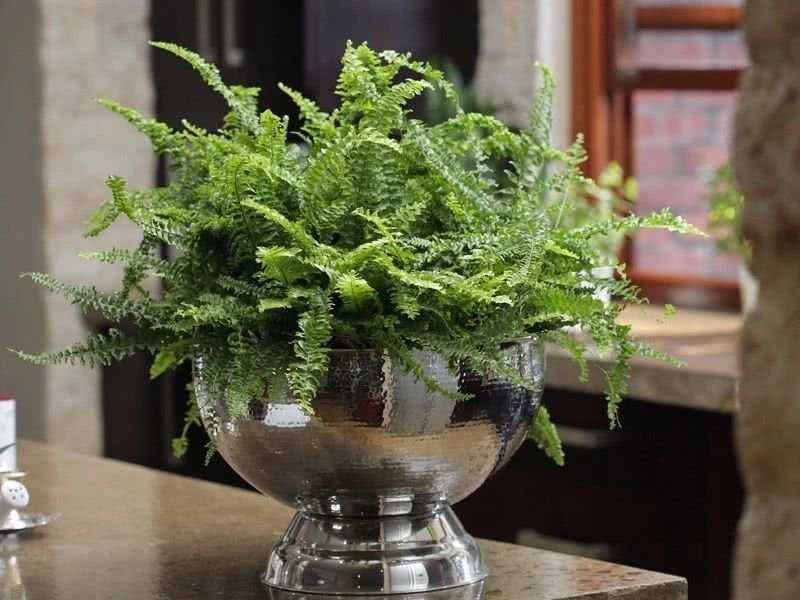

If the windows face south, you can place the fern away from the window.





